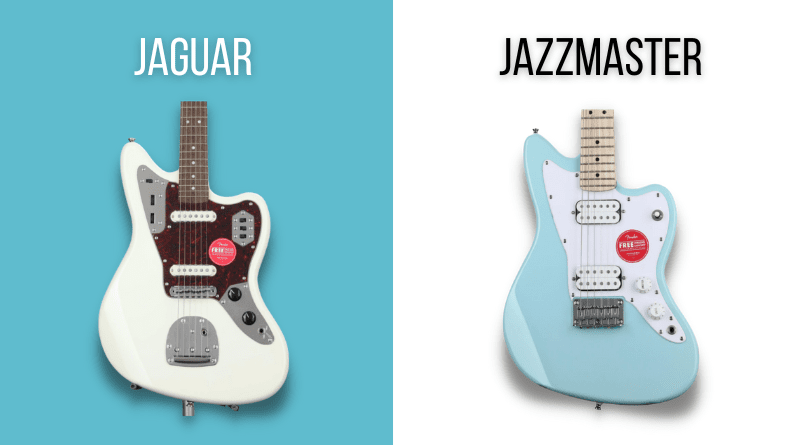If you’ve been wanting to know more about the Jazzmaster and the Jaguar, you won’t want to miss this one!
Read more about our review process.
Contents
Main Differences Between the Jazzmaster and the Jaguar
While there are undoubtedly some similarities between the two, in this section we’ll focus on what sets the Jazzmaster and Jaguar apart.
Body Type
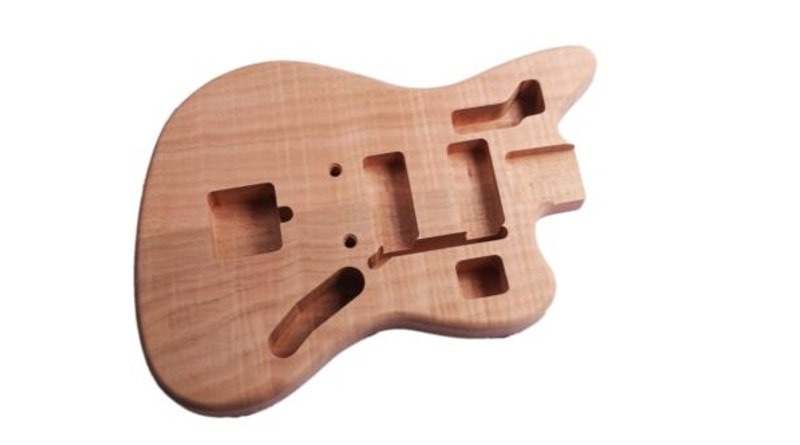
The first thing you’ll notice when you compare the Jazzmaster and the Jaguar is that they have practically the same body shape, although there are a few small differences in the dimensions. This is the root of most of the confusion between the two, as they look pretty much identical to the untrained eye.
Scale Length
The most noticeable difference between the Jazzmaster and the Jaguar when it comes to playability is their scale length. The Jazzmaster follows the same 25.5” scale length as the Telecaster and Stratocaster models, while the Jaguar sports a much shorter 24” scale.
Pickups
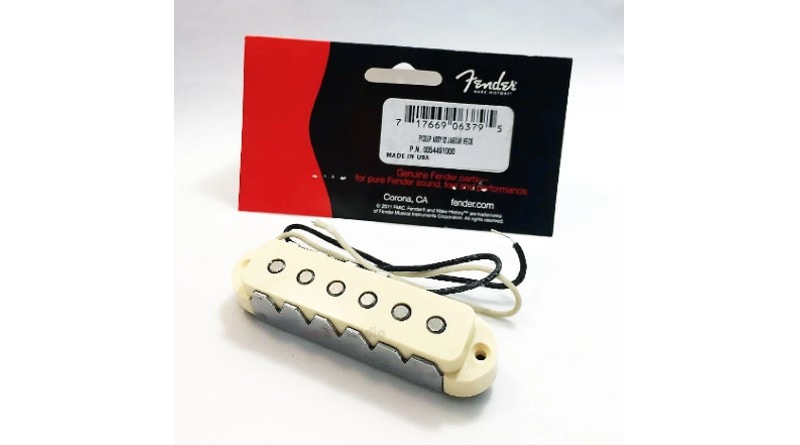
Both the Jazzmaster and the Jaguar have two single-coil pickups as standard. However, there are some key differences between them. The Jazzmaster’s pickups are designed to provide a bright, yet mellow sound. Visually they look like P90 pickups, but it’s important to note that they are not actually P90s. Jazzmasters were originally intended, as you can probably guess, for jazz – but the bright, chimey tones found themselves better aligned with surf rock.
The Jaguar’s pickups, on the other hand, are designed for a hotter sound with less noise. They are narrow single coil units, similar to those on a Strat, but are just a little thinner. They are known to work well for genres like rock and punk. There are some versions of the Jag that feature humbuckers as standard, too, including the Vintera and the Kurt Cobain signature models.
Controls
The Jazzmaster has a more conservative appearance overall. It features a 1 piece pickguard, and has a 3 way toggle switch for changing between the pickups. The Jaguar, on the other hand, has a more contemporary, aggressive appearance with its chromed flashes, and its 3 individual switches that cover neck pickup on/off, bridge pickup on/off, and the bass strangle on/off switch that adds a capacitor into the signal to cut out the low end frequencies.
Jazzmaster
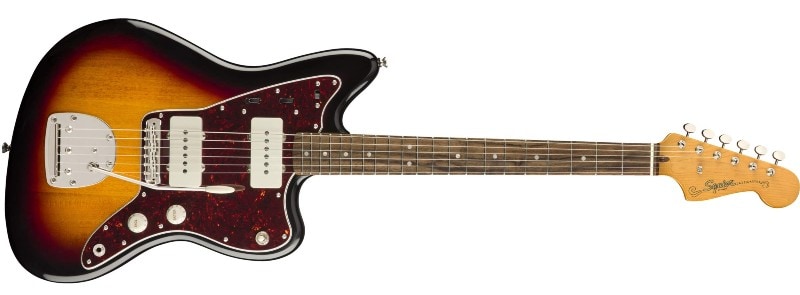
The Fender Jazzmaster made its debut in 1958 as an upscale alternative to the Stratocaster. Its offset body was pretty revolutionary for the time, and its two single-coil pickups, and floating tremolo system provided a wide range of tones that Fender hoped would pull East Coast jazz musicians away from their Gibson jazz boxes. While the guitar was, of course, designed with jazz musicians in mind, it soon attracted a wider following among blues and surf rock players.
The Ventures were one of the first bands to popularize the Jazzmaster. Many of their hits showcased the guitar’s dynamic tones and of course, the fantastic vibrato system. The Beach Boys were also big fans of the Jazzmaster, with Brian and Carl Wilson famously using theirs on the band’s classic album, Pet Sounds.
The Jazzmaster was the first Fender guitar to feature an adjustable bridge and separate vibrato tailpiece. These features, along with the guitar’s slim neck and fast action, made it ideal for lead playing.
In recent years, the Jazzmaster has seen something of a renaissance thanks to its unique sound and vintage aesthetic. Modern players like Kurt Vile, Jim Root, and J Mascis have all helped bring this model back into the spotlight.
Construction
Like most Fender models, today’s Jazzmasters are made with alder bodies. This was in response to a commitment to the recovery of the ash population, as these trees were in decline. Tonally the alder is quite similar, and aesthetically it’s not obvious either, as most Jazzmasters have sunburst or opaque finishes.
The body is offset, with something of a parallelogram shape. It’s an extremely comfortable design, helped in a big way by the large belly carve. The offset design also allows for total access to the upper frets. It is a double cutaway style guitar, and the treble side cutaway actually dips below the bottom of the fretboard.
Tones
The Jazzmaster is prized for its extremely mellow tone. It was voiced this way originally to appeal to jazz musicians, but Fender actually had a hard time luring them to the Jazzmaster, primarily because it lacked the warmth they were accustomed to from their humbucker equipped guitars. It has much less bottom end than you’d find on a Strat, or even a Telecaster, and this was one of the primary reasons for the lack of success with the target audience.
While the Strat and Tele are known for their quack and their twang, respectively, the Jazzmaster is beloved for its open, chimey tone. It’s an extremely bright guitar, and offers superb articulation.
Fortunately, the bright tones found their audience with the Surf Rock crowd, and Fender had a reason to continue production of these excellent guitars.
Playability
Whether or not you think the Jazzmaster offers good playability depends on which camp you belong to when it comes to scale length. It has a fairly large 25.5” scale, which is getting dangerously close to baritone. This was another reason that Fender had difficulty in pulling customers away from Gibson.
Besides the scale length, the ergonomics of the Jazzmaster are excellent. The classic neck shape for these guitars was a mid size C profile, which suits it very well. Of course, the neck is a bolt on and made from maple, which provides tons of snap.
Favorite Models
Fender American Vintage II Jazzmaster
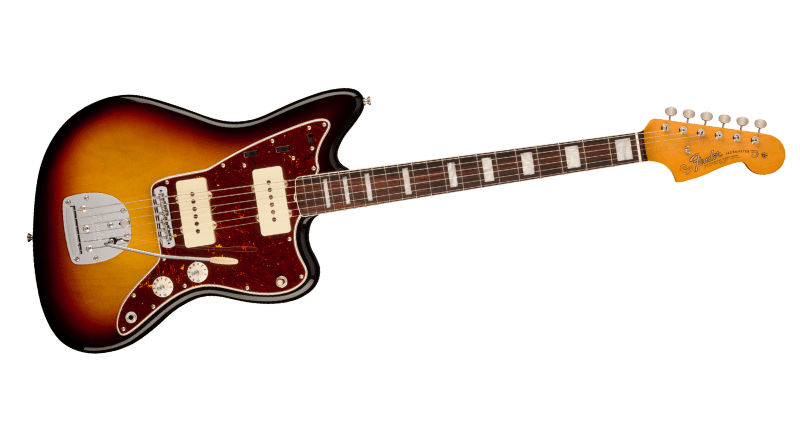
Fender went all out with the American Vintage II Jazzmaster, building it with period correct woods, and even applying a nitrocellulose lacquer, all in search of the authentic ‘60s tone. It has a pair of pure vintage ’66 single coil soap bar style pickups, delivering the classic brightness and chime that these guitars are best known for.
Fender Vintera ‘60s Jazzmaster Modified

This Vintera modified edition of the Jazzmaster is all about the tone. It has a pair of high output ‘60s Hot Jazzmaster single coil pickups that provide better high gain performance, making this a stellar choice for the indie and alt guitarist who wants a Jazzmster with a bit more grunt from the factory.
Fender Jim Root Jazzmaster
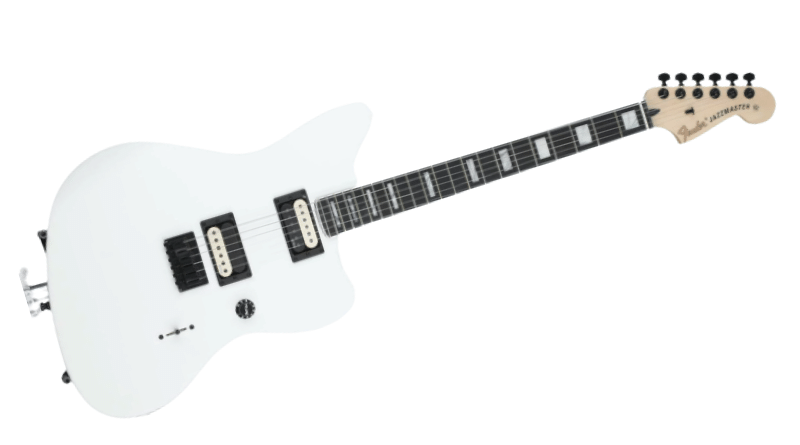
The Fender Jim Root Jazzmaster is the meanest Jazzmaster ever built. Built to the Slipknot guitarist’s exacting standards, and based on the same classic body and 25.5” scale length, this blacked out beast is fitted with a pair of active EMG humbucking pickups for insane high gain performance. It loses the lead and rhythm circuits, as well as the tone knob. Just like Root’s own guitars, all the tonal variation necessary can be found simply by adjusting the volume.
Squier Classic Vibe ‘60s Jazzmaster
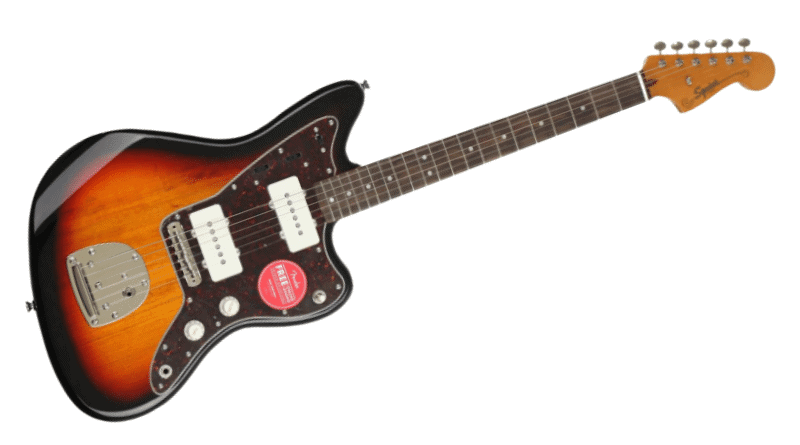
If you’re looking for a great Jazzmaster on a budget, the Squier Classic Vibe ‘60s Jazzmaster is the one for you. It’s extremely close to Fender Spec, but comes in at about half the price. Of course there are some concessions in the construction compared to a Fender, but it features all the Jazzmaster hallmarks, and is perfectly giggable right out of the box. A great buy for value savvy guitar shoppers.
- Cool vintage vibe
- Great clean tones
- Extremely comfortable to play
- Vibrato can be difficult to set up properly
- Long scale length can be difficult
- Standard models not ideal for highly driven tones
Jaguar

The Fender Jaguar was launched in 1962, and was intended to be Fender’s top of the range model. Though it was initially met with lukewarm reception, the Jaguar has since become a favorite among rock and indie guitarists largely thanks to its unique sound and iconic design.
As mentioned, the Fender Jaguar first hit stores in 1962, but it didn’t gain much traction with guitarists at first. Like with the Jazzmaster, it wasn’t until surf rock players like Carl Wilson of the Beach Boys started using the Jaguar that it began to catch on. It had a short scale that was intended to appeal to players who weren’t keen on the standard Fender 25.5″ scale, and the distinctive sound of the Jaguar’s pickups helped it stand out from other guitars of the era.
The Jaguar continued to be popular throughout the 1960s and 1970s, particularly among punk and alternative bands who were attracted to its non-conventional appearance – and of course, its affordability and wide availability in pawn shops thanks to the lack of early popularity was definitely helpful.
One of the most iconic users of the Fender Jaguar was Kurt Cobain of Nirvana. Cobain’s Jag was heavily modified, but regardless, he did more for the model’s popularity than arguably any other player.
Construction
The Fender Jaguar is a solid body offset model, that at first glance, looks extraordinarily similar to the Jazzmaster. In fact, many mistakenly believe that they have the same body. This isn’t actually true, and while the shapes are very similar, the dimensions are not the same.
The body of these guitars is made from alder, and it too has excellent upper fret access. Jags have bolt on maple necks, but the fretboard material does change depending on which model you opt for, with Indian laurel and pau ferro in use on the more budget friendly models, and rosewood as the wood of choice on the high end and US made versions.
One of the most popular features about the Jaguar compared with the Jazzmaster is its shorter scale. The Jag has a 24” scale, which gives it much wider appeal across a broader range of guitarists. Those used to playing Gibsons feel right at home with the Jag, and that’s exactly how Fender want it.
Tones
Rather than the wide single coils like the Jazzmster has (the ones that look like P90s), the Jaguar features narrower, taller single coil pickups that are tonally closer to the Stratocaster than anything else. Of course, there are multiple versions, some with 2 single coils, some with a HS setup and some with a HH configuration.
Around the pickups on the Jaguar is a notched metal ring, and the job of this ring is to help to reduce the hum from the single coil pickups. This results in it being a quieter guitar than a Jazzmaster, Strat, or Tele, and is one of the many reasons why this model was so popular amongst grunge, punk, and rock players.
The Jaguar has additional controls, too. In fact, it has the most intricate electronic system of any Fender guitar. Like the Jazzmaster it has a lead and a rhythm circuit, but instead of a simple toggle switch, it has 3 slide switches, allowing for a greater number of combinations of settings, and ultimately more tonal variety.
Playability
The Fender Jaguar is easily one of the most comfortable and easily playable Fender guitars ever built. Because of the shorter scale length at just 24”, it’s more comfortable for smaller players, and larger players won’t find it cramped, either. It really is a win-win setup.
Its upper fret access is absolutely fantastic, and the C profile neck is slick and fast. It offers excellent body ergonomics, and is comfortable to play from both seated and standing positions. Being alder, it’s light weight, and its non-locking, floating vibrato system is an absolute pleasure to use.
Favorite Models
Fender Vintera ‘60s Jaguar
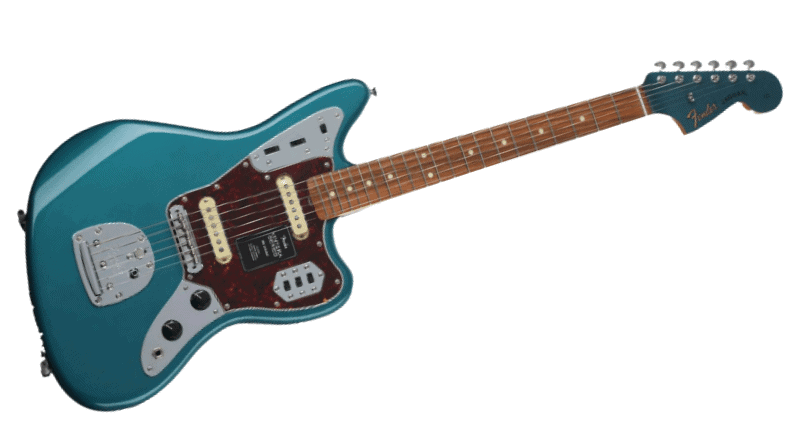
The Vintera ‘60s Jaguar isn’t a reproduction or a reissue, but rather a modern guitar inspired by the best parts of the early models. It has the classic 2 single coil pickup layout which delivers plenty of high octane tone when pushed hard, but plenty of brightness when you’re playing surf rock. It’s exceptionally well finished for a non-US made model, and should definitely be on your radar if you’re looking for a workhorse that you don’t mid taking out and about.
Fender Kurt Cobain Jaguar NOS
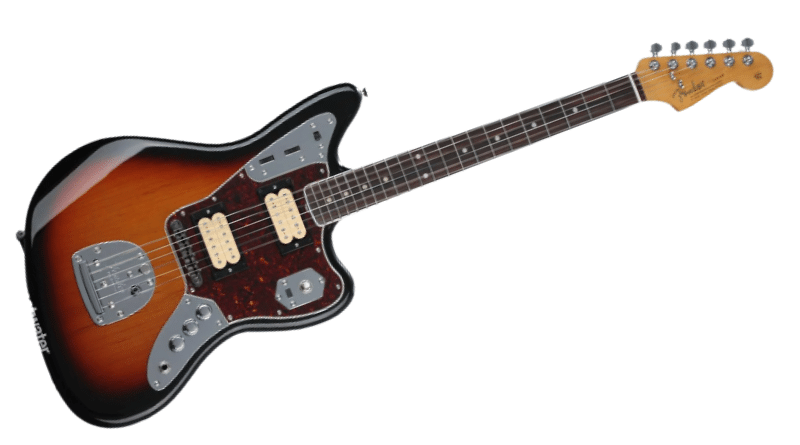
Kurt Cobain arguably put what was a bit of a “has been” model back on the map thanks to his iconic performances with Nirvana using this very guitar. In place of the standard single coil pickups are a pair of DiMarzio humbuckers, and the 3 sliding switches have been swapped out for one sliding switch and a standard toggle switch. Like Kurt’s own Jaguars, it’s heavily modified, and it’s ready to rock hard right out of the box.
Fender Player Jaguar
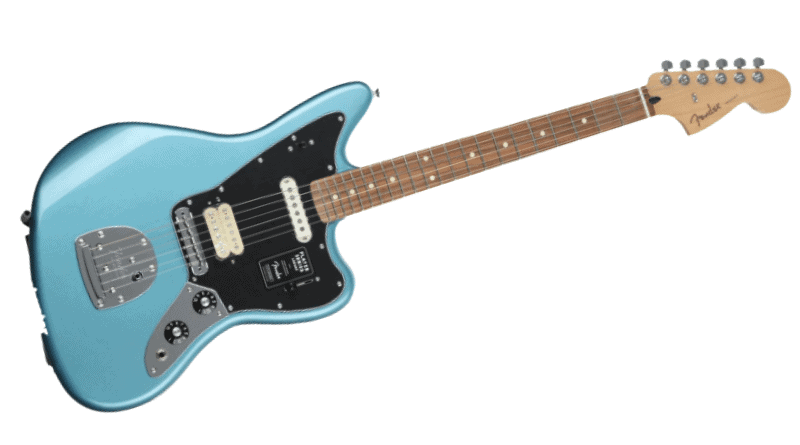
This is the entry level Fender Jaguar, and it represents a great way to get your hands on a dynamic, modern Jaguar for those not interested in vintage features and appointments. It’s a stripped back version equipped with a single coil pickup in the neck and humbucker in the bridge, delivering a great range of tones. It also features a stripped back electronics arrangement. It even has coil splitting to allow for both humbucking and single coil bridge tones, and the C shape neck profile is fast and comfortable.
Squier Classic Vibe ‘70s Jaguar
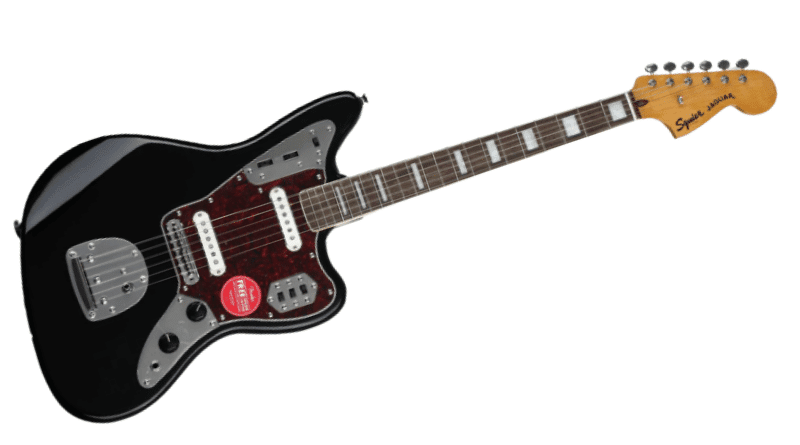
Harking back to what was arguably the best era for the Jaguar, this ‘70s Squier Classic Vibe delivers big on all the must have features of the Jaguar, while keeping the price to an absolute minimum. It’s extremely faithful to the original spec, and offers the same awesome playability and amazing aesthetic. Despite being an import model, it’s still more than capable of meeting the needs of today’s working musician, too.
- Extremely comfortable scale length
- Ergonomic body shape
- Lots of pickup variations
- Trem system less useful than Strat style
- Doesn’t handle drop tuning well
- Slightly darker tone than Jazzmaster
Final Thoughts on the Jazzmaster vs Jaguar
For two guitars that look so similar, there really are a lot of differences between the Jazzmaster and the Jaguar. Whether you opt for a vintage reissue, a signature model, or a modern take, there’s a guitar for absolutely everybody when you consider all the options. As for which is better, that’s really best left to personal preference.
In a nutshell, if you like big guitars with a longer scale, or guitars with a brighter and more mellow tone, then the Jazzmaster is going to be the best option for you. In the event that you prefer a shorter scale with better overdriven performance, we’re going to recommend you go with the Jaguar.

